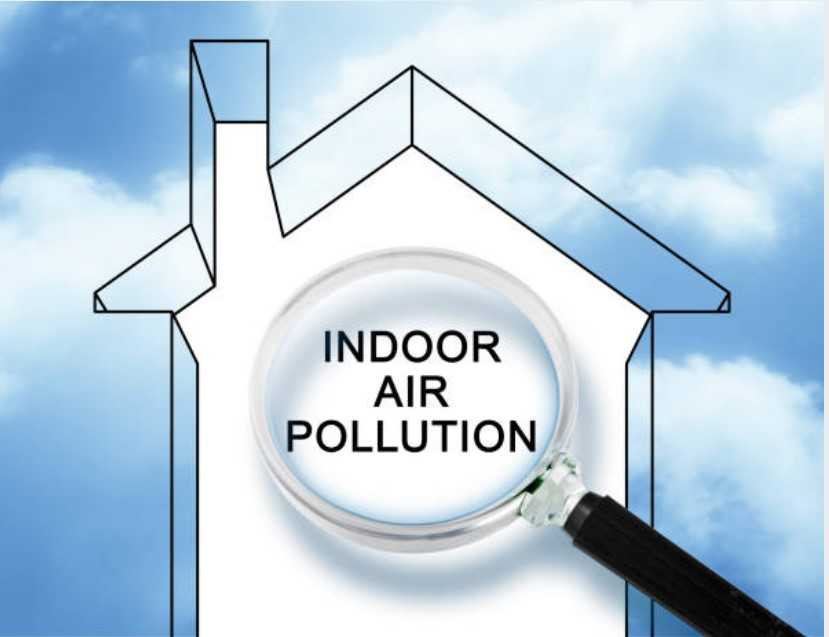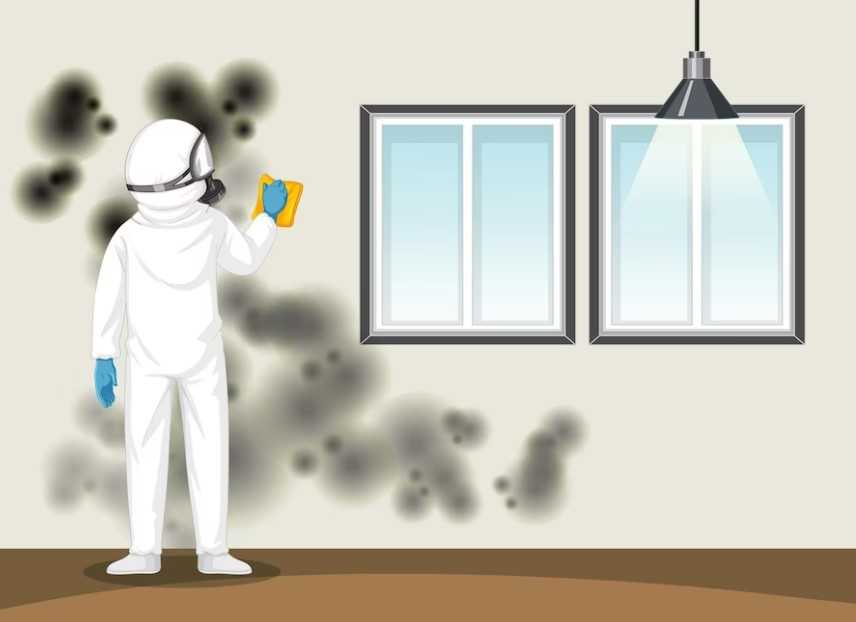Indoor Pollution: Causes, Types And Solutions

Any contamination of the air within a facility is referred to as indoor air pollution. Molds, solvents, pesticides, smoke, pet dander, and gases are the broad categories into which pollutants fall.
What is Indoor Pollution?
Indoor air pollution will have some negative effects on most properties. Indoor Air Quality, IAQ, is a metric used to assess how a building's interior air impacts the comfort and health of its residents.
Due to the development of more energy-efficient dwellings, indoor air pollution has grown to be a more urgent issue. As a result of the near airtightness of these structures, the air inside can easily stagnate and pollution levels can rise very quickly.
Indoor pollution is caused by toxic chemicals and airborne particles in our houses. To prevent indoor pollution, we should always endeavor to maintain air quality regulations.
In other places, burning fuels like coal, wood, and gas for cooking and heating results in the production of numerous hazardous compounds.
They include particles and other hazardous substances, as well as formaldehyde and carbon monoxide. These chemicals are inhaled without enough ventilation, which can harm your health in a variety of ways.

Causes of Indoor Air Pollution
- Extreme heat and humidity
- Fuel-burning equipment
- Tobacco smoking
- Home maintenance products.
- Systems for central heating and cooling.
- Freshly installed carpet or flooring.
- Carpeting
How Does Indoor Air Pollution Affect Human Health?
A condition known as "sick building syndrome," or SBS, has been caused by a decrease in the exchange of fresh air in modern structures. Poor ventilation and poorly maintained air conditioning are two typical contributors to this.
Sick building syndrome signs get worse the longer you stay on the premises and get better when you leave. The most typical signs are as follows:
- Headaches
- Blocked sinuses or a runny nose
- Skin rashes
- Itchy eyes
- Drowsiness
- Difficulty breathing
Remember that these symptoms are very common and can be brought on by a variety of conditions, including common allergies.
It is doubtful that sick building syndrome is the root reason if you occasionally have these symptoms or if you do all the time, no matter where you are.

Types of indoor pollution
There are numerous types of indoor pollution but this article will highlight some of the common yet neglected types.
1. Arts and crafts and health concerns
The materials used in arts and crafts activities pose substantial health risks to both children and adults.
Several types of paints, glues, and model materials contain ingredients that can damage tissues, cause mental retardation, and cause cancer.
When we breathe in, we are exposed.
2. Carpet fumes
Volatile organic compounds (VOCS), which carpet emits, can contaminate the air inside a structure.
When it comes to one's health, exposure to chemicals like volatile organic compounds might result in coughing, breathing problems, respiratory diseases, and sneezing.
3. Dampness in Buildings
Dampness is the term for when water penetrates a building's structural elements (like its walls, floors, roofs, or basements).
Poorly designed structures and low-quality building materials can cause moisture in structures.
Respiratory issues such as asthma can be brought on by moisture in a structure. Buildings should be developed while upholding criteria for indoor air quality.
4. House cleaners and disinfectants
Many home and cleaning agents irritate the eyes, throat, or cause headaches, among other health issues, such as cancer.
Volatile organic compounds (VOCs), ammonia, and bleach are among the constituents in some of these cleaning products that produce harmful substances.
5. Toxic material found in non-stick pans and pots
Teflon, commonly referred to as polytetrafluoroethylene, is used to cover all non-stick pots and pans.
You need to replace your cookware if any toxic substance is leaking from the pan and getting into your meals since these materials turn into toxic chemicals that can be harmful to our health and can be carcinogenic.
Preventing indoor pollution
Preventing indoor pollution or improving ventilation to meet criteria for air quality.
- Avoid using carpeting and refrain from smoking indoors.
- Make sure your gas stove is properly ventilated,
- Patch any water leaks,
- cover your trash to keep pests away, and stay clear of clutter.
- Remove your shoes at the entryway
- Use air fresheners sparingly.
- Regularly clean any surfaces that collect dust.
- Alternate your bed linens every week.
- Check that the exhaust fans in your kitchen and bathrooms are in good operating order.

Nevertheless, if you suffer similar symptoms—and they worsen—every time you enter a specific structure, SBS might be to fault. You can try the following to reduce the symptoms on your own:
- Consider taking more frequent breaks from your work
- Opening windows or doors to let fresh air in.
- Lower the temperature to roughly 66°F.
- Wherever you can, go outside to get some fresh air.
Ask your manager or employer to look into the cause of the issue if you are exhibiting these symptoms while working. Alternatively, if this happens in another rental property you live in, speak with your landlord or building manager.
Given sustained exposure, some of the causes of sick building syndrome can be quite harmful and shouldn't be taken lightly.
Taking some simple precautions can help to enhance indoor air quality in your home and improve your health
This article is written, edited, and published by Saima Ali in collaboration with Hubslides' In-house Editorial Team.
Author Bio
Contributor comprises full-time and freelance writers that form an integral part of the Editorial team of Hubslides working on different stages of content writing and publishing with overall goals of enriching the readers' knowledge through research and publishing of quality content.
Article Comments
No Comments!
At present there are zero comments on this article.
Why not be the first to make a comment?
Similar Articles
Sponsor
Search Articles
Experts Column
Latest Articles
Featured Articles
Most Popular Articles












